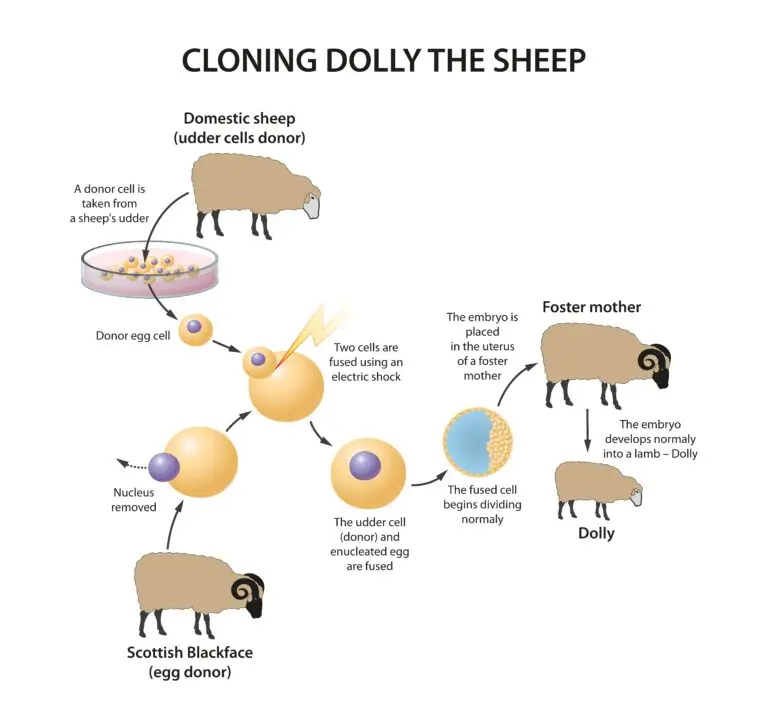Cloning

Table of Contents
What is Cloning?
Cloning in biology refers to producing genetically identical copies of organisms, cells, or DNA fragments. It involves replicating genetic material to create a replica of the original organism or molecular material. Cloning can occur naturally or be induced through various artificial techniques.
Cloning in Biology
Natural Cloning
- Asexual Reproduction: Many organisms reproduce asexually, producing offspring that are genetically identical to the parent. Examples include bacteria through binary fission, plants through runners or bulbs, and some animals through processes like budding.
- Mitosis: During mitosis, cells divide to produce two identical daughter cells with the same genetic material as the parent cell.
Artificial Cloning
- Reproductive Cloning: In reproductive cloning, an entire organism is cloned. This is often done using somatic cell nuclear transfer (SCNT). In SCNT, the nucleus of a somatic cell (any cell other than a sperm or egg cell) is transferred into an egg cell with its nucleus removed. The egg cell, with the new nucleus, is stimulated to divide and develop into an organism genetically identical to the donor.
- Therapeutic Cloning: In therapeutic cloning, the goal is not to create a new organism but to generate embryonic stem cells for medical purposes. The process is similar to reproductive cloning but involves harvesting stem cells for potential use in regenerative medicine.
Molecular Cloning
Molecular cloning involves the replication of specific DNA fragments rather than entire organisms. This is commonly used in genetic engineering and research. Techniques such as polymerase chain reaction (PCR) allow the amplification of specific DNA sequences, creating numerous copies of the target region.
Applications and Uses
- Agriculture: Cloning can be used to propagate plants with desirable traits or reproduce genetically superior animals.
- Medicine: Cloning technologies are explored for potential therapeutic applications, including the production of tissues and organs for transplantation.
- Genetic Research: Molecular cloning is a fundamental tool in genetic research, enabling the study of specific genes and their functions.
Limitations and Challenges
Cloning is not always efficient, and there are challenges associated with the health and viability of cloned organisms. Ethical and moral considerations and technical limitations have influenced the public perception and acceptance of cloning technologies.
Related Links
Reproduction
Organisms
Cells
Recombinant DNA